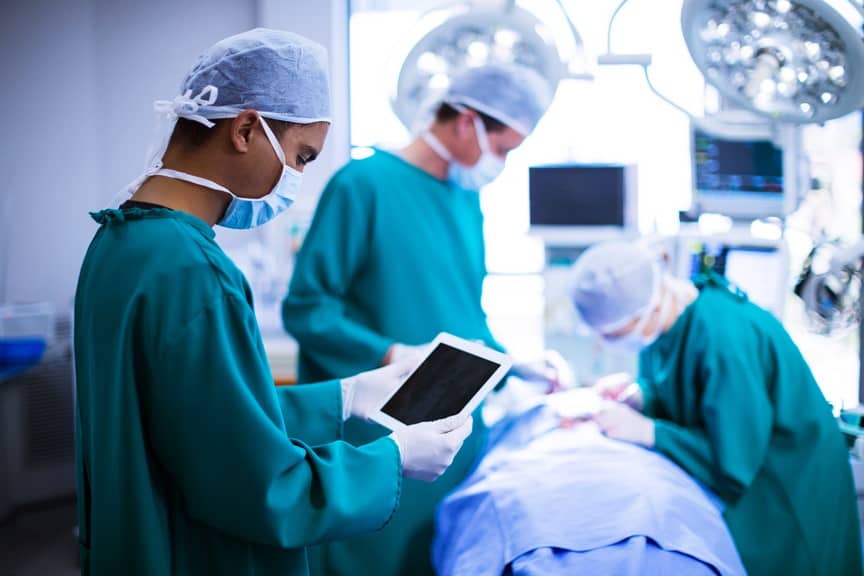
Liposuction surgery is a popular cosmetic procedure that promises to remove unwanted fat and contour the body. However, despite its widespread popularity, liposuction can be quite dangerous if proper precautions are not taken. From infections and blood clots to skin damage and anesthesia-related problems, there are numerous potential hazards associated with liposuction surgery. In this article, we will examine the dangerous risks of liposuction surgery and explore the potential complications involved in this procedure.
Table of Contents
The Dangerous Risks of Liposuction Surgery
Liposuction is a popular cosmetic procedure that aims to remove unwanted fat from specific areas of the body. While it can provide excellent results for many people, it is essential to understand that it is not without risks. In fact, liposuction surgery can be quite dangerous if proper precautions are not taken.
What is Liposuction?
Liposuction is a surgical procedure that involves the removal of excess fat from the body using a hollow tube called a cannula. The cannula is inserted through a small incision in the skin and used to suction out fat cells until the desired contouring is achieved. There are several different types of liposuction techniques, including tumescent liposuction, ultrasound-assisted liposuction, and laser liposuction.
Potential Dangers of Liposuction Surgery
Liposuction surgery can be quite dangerous if proper precautions are not taken. Some of the most common complications include infections, blood clots, fluid accumulation, skin damage, and anesthesia-related problems. In rare cases, liposuction can lead to life-threatening complications such as pulmonary embolism, cardiac arrest, or organ failure.
Complications Associated with Liposuction Surgery
Complications associated with liposuction surgery can range from minor to severe. One of the most significant risks of liposuction is infection. If an infection occurs, it can cause fever, pain, redness, and inflammation at the treatment site. In rare cases, infections can spread throughout the body and become life-threatening.
Another risk of liposuction is the formation of blood clots. These can occur when a large amount of fat is suctioned out of the body, causing damage to blood vessels. Blood clots can lead to stroke, pulmonary embolism, or even death.
Skin damage is another dangerous complication of liposuction surgery. If the cannula is inserted too aggressively, it can cause skin perforation, scarring, or skin irregularities. In some cases, the skin may become necrotic (die) and require further surgical intervention.
Risks and Side Effects of Liposuction
Like any surgical procedure, liposuction carries risks and side effects. Some of the common risks include bleeding, bruising, swelling, and numbness. Scarring, skin irregularities, and changes in skin pigmentation are also possible. Additionally, some people may experience adverse reactions to anesthesia, which can cause nausea, vomiting, or difficulty breathing.
Safety Precautions for Liposuction Surgery
To minimize the dangerous risks associated with liposuction surgery, it is essential to take appropriate safety precautions. Choosing an experienced and board-certified surgeon, following pre-operative instructions, and disclosing your medical history and medications can help reduce the risk of complications. It is also crucial to follow post-operative care instructions carefully and attend follow-up appointments with your surgeon.
In conclusion, liposuction surgery can be quite dangerous if proper precautions are not taken. By understanding the potential dangers, working with an experienced surgeon, and taking appropriate safety measures, you can minimize the risks and achieve the body contouring results you desire.

Is Liposuction Dangerous? Separating Fact from Fiction
Liposuction is a popular cosmetic procedure that aims to remove excess fat deposits from specific areas of the body, resulting in improved body contours. However, like any surgical procedure, there are concerns regarding its safety and potential risks. In this article, we will delve into the topic of liposuction and examine whether it is dangerous or not. By understanding the procedure, associated risks, safety measures, and alternative options, we aim to provide you with a comprehensive perspective on the safety of liposuction.
Understanding Liposuction
Before addressing the safety aspects, let’s gain a clear understanding of what liposuction entails. Liposuction, also known as lipoplasty or suction-assisted lipectomy, is a surgical procedure designed to remove excess fat deposits from various areas of the body. It is primarily performed to enhance body contours and achieve a more proportionate and sculpted appearance.
The Liposuction Procedure
Liposuction typically involves the following steps:
- Preoperative Consultation: During this phase, you will discuss your goals and expectations with a qualified plastic surgeon. They will evaluate your medical history, assess your candidacy for the procedure, and provide recommendations tailored to your specific needs.
- Anesthesia Options: Liposuction can be performed under local anesthesia with sedation or general anesthesia, depending on the extent of the procedure and the surgeon’s preference. The choice of anesthesia will be discussed and decided upon during your consultation.
- Surgical Techniques: There are various liposuction techniques available today, including traditional liposuction, tumescent liposuction, ultrasound-assisted liposuction (UAL), and laser-assisted liposuction (LAL). The surgeon will determine the most suitable technique based on factors such as the target area, the amount of fat to be removed, and your individual circumstances.
Potential Risks and Complications
It is essential to understand that all surgical procedures carry some level of risk. While liposuction is generally considered safe when performed by a qualified and experienced plastic surgeon, there are potential risks and complications that need to be taken into account. These include:
- General Risks of Surgery: Liposuction, like any surgical procedure, carries general risks such as adverse reactions to anesthesia, bleeding, infection, blood clots, and poor wound healing. However, these risks are relatively rare.
- Specific Risks of Liposuction: Specific risks associated with liposuction include contour irregularities, asymmetry, changes in skin sensation, fluid accumulation, scarring, and unfavorable aesthetic outcomes. The likelihood of experiencing these risks can vary depending on factors such as the extent of the procedure, the area being treated, and individual healing capabilities.
Safety Measures and Precautions
To minimize the risks associated with liposuction, it is crucial to adhere to safety measures and take necessary precautions:
- Qualified Surgeons and Facilities: Choosing a board-certified plastic surgeon with extensive experience in liposuction procedures is vital. Ensure that the surgery is performed in an accredited surgical facility equipped with appropriate safety measures.
- Patient Evaluation and Candidacy: A thorough evaluation of the patient’s overall health, medical history, and individual circumstances is essential to determine candidacy for liposuction. Patients with underlying health conditions or unrealistic expectations may not be suitable candidates.
- Importance of Proper Aftercare: Following postoperative instructions provided by your surgeon is crucial for a smooth recovery and optimal results. This includes wearing compression garments, taking prescribed medications, maintaining proper hygiene, and attending follow-up appointments.
Realistic Expectations and Desired Results
To address the safety concerns surrounding liposuction, it’s important to set realistic expectations and understand the desired results:
- Body Contouring vs. Weight Loss: Liposuction is not a weight-loss solution. Its primary goal is to contour specific areas by removing localized fat deposits. Understanding this distinction is essential to avoid disappointment and have realistic expectations.
- Individual Variations and Limitations: Each person’s body is unique, and individual variations play a role in the outcome of liposuction. Factors such as skin elasticity, underlying muscle tone, and overall body proportions can influence the final results. It’s important to have open and honest discussions with your surgeon to gain a clear understanding of the limitations and potential outcomes.
Alternatives to Liposuction
If you have concerns about the safety of liposuction or if it is not suitable for your specific situation, there are alternative options available:
- Non-Invasive Body Contouring: Non-surgical procedures such as cryolipolysis (CoolSculpting) and laser therapy (SculpSure) can help reduce localized fat without the need for surgery. These treatments have minimal downtime and fewer associated risks compared to liposuction.
- Healthy Lifestyle Choices: Adopting a healthy lifestyle that includes a balanced diet and regular exercise can have a significant impact on body contours. While it may not directly target specific areas of stubborn fat, a holistic approach to overall wellness can help achieve a more balanced physique.
Liposuction Dangerous FAQs
Is liposuction painful?
Liposuction is performed under anesthesia, so you won’t feel any pain during the procedure. However, some discomfort and soreness can be expected during the recovery period.
How long does it take to recover from liposuction?
The recovery time can vary depending on the extent of the procedure and individual healing capabilities. Generally, it takes a few weeks to several months to fully recover and see the final results.
Can liposuction remove cellulite?
Liposuction is not designed to treat cellulite specifically. It focuses on removing excess fat deposits. However, the improvement in body contours achieved through liposuction may help reduce the appearance of cellulite.
Are the results of liposuction permanent?
Liposuction permanently removes fat cells from the treated areas. However, it is important to maintain a healthy lifestyle to prevent the remaining fat cells from expanding.
Can liposuction be combined with other procedures?
Yes, liposuction can be combined with other procedures such as tummy tuck and arm lift or breast augmentation to achieve comprehensive body contouring results. Your surgeon can discuss the available options based on your specific needs.






